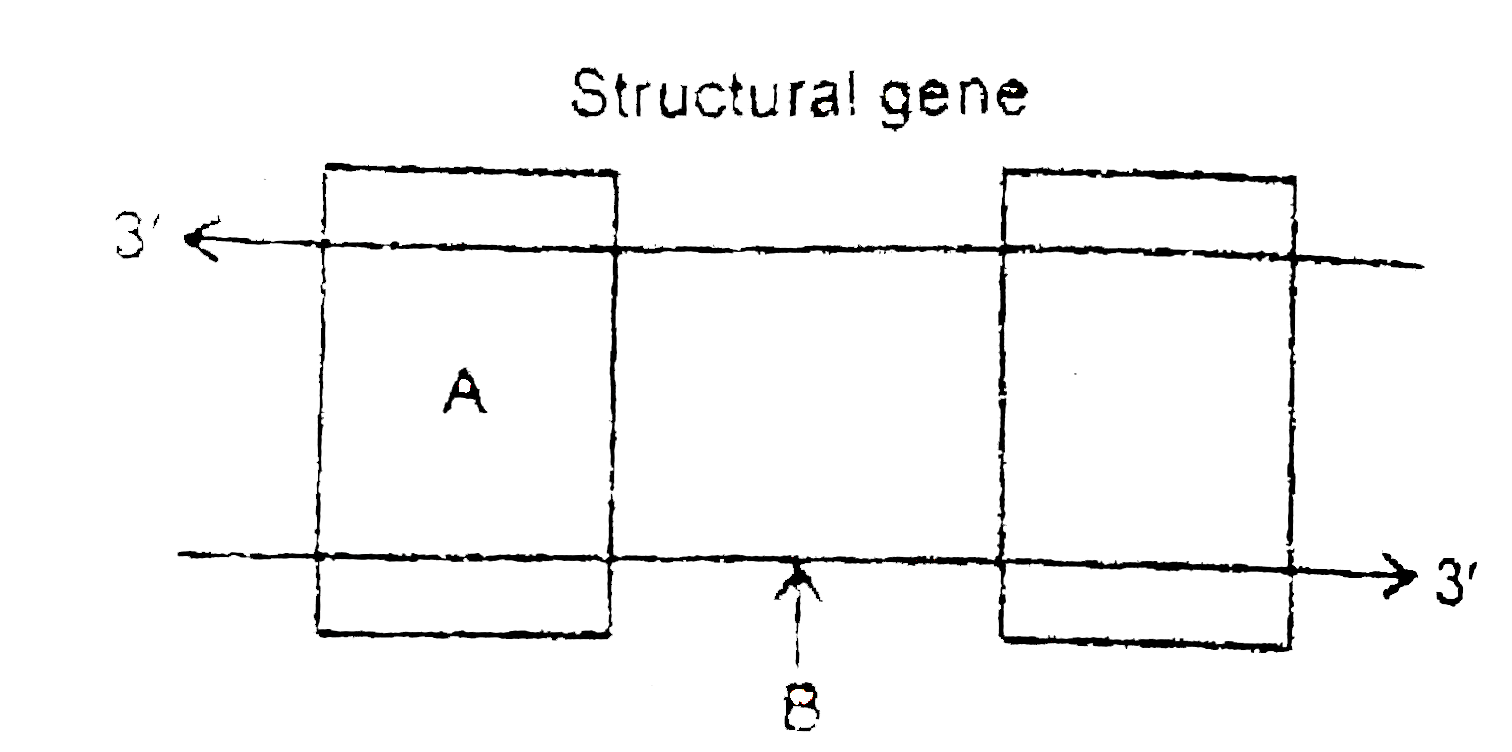Complete Solutions to SECTION-A of chapter GENETICS AND EVOLUTION of Class 12 book with complete answers and questions
| Class 12 | BIOLOGY |
| Chapter | GENETICS AND EVOLUTION |
| TRUEMAN BIOLOGY | SECTION-A |
| Number Of Questions | 34 |
| Academic Year | 2023-24 |
Which Mendel's law of inheritance is universally acceptable and without any exception? State the law
View SolutionName the parts 'A' and 'B' of the transcription unit given below.

View SolutionName the components 'a' and 'b' in the nucleotide with a purine, given in the figure:

View SolutionWhy hnRNA is required to undergo splicing?
View SolutionState any one reason to explain why RNA viruses mutate and evolve faster than other viruses
View SolutionHow is the length of DNA usually calculated?
View SolutionHow does HIV differ from bacteriophage?
View SolutionThe gene I that controls the ABO blood grouping in human beings has three alleles IA. IB and i
(a) How many different genotypes are Likely to be present in human population?
(b) Also, how many phenotypes are possibly present?
View SolutionProvide one word or one sentence information about 'plasmid' with respect to its (i) chemical nature and (ii) its duplication.
View SolutionName the event during cell division that results in the gain or loss of chromosome.
View SolutionMention the contribution of genetic maps in human genome project.
View SolutionName one autosomal dominant and one autosomal recessive. Mendelian disorder in human.
View SolutionA human being suffering from Down's Syndrome shows trisomy of `21^(st)` chromosome. Mention the cause of this chromosomal abnormality.
View SolutionA pedigree chart given here, presents a particular generation which shows a trait irrespective of sexes (ie.. present in both male and female). Neither of the parents of the particular generation shows that trait. Draw your conclusion on the basis of the pedigree.

View SolutionIn order to obtain the `F_(1)`-generation Mendel pollinated a pure-breeding tall plant with a pure-breeding dwarf plant. But for getting the `F_(2)`-generatin, he simply self-pollinated the tall `F_(1)` plants. Why?
View Solution"Genes contain the information that is required to express a particular trait. Explain

View SolutionHow are alleles of particular gene differ from each other? Explain its significance.
View SolutionFor the experssion of traits genes provide only the potentiality and the enivornment provides the opportunity. Comment on the veracity of the statement.
View SolutionA, B, D are three independently assorting genes with their recessive aleles a,b,d respectively. A cross was made between individuals of Aa bb DD genotype with aa bb dd. Find out the type of genotypes of the offspring produced.
View SolutionSometimes cattle or even humen beings give birth to their young ones that are having extremely different sets of organs like limba/position of eye(s) etc. Comment .
View SolutionIn a nucleus, the number of RNA nucleoside triphosphates is 10 times more than the number of DNA nucleoside triphosphates, still only DNA nucleotides are added during the DNA replication, and not the RNA nucleotides. Why?
View SolutionName the enzyme and state its property that is responsible for continuous and discontinuous replication of the two strands of a DNA molecule.
View SolutionPick out the ancestral line of Cycads from the list given below-Ferns, herbaceous lycopods, seed ferns, and horsetails
View SolutionMention the type of evolution that has brought the similarity as seen in potato tuber and sweet potato.
View Solution
Study the ladder of human evolution given above and answer the following questions.
(i) Where did Australopithecus evolve?
(ii) Write the scientific name of Java man?
View SolutionCoelacanth was caught in 1938 in South Africa. Why is it very significant in the evolutionary history of vertebrates?
View SolutionName the common ancestor of the great apes and man.
View SolutionHow do we compute the age of a fossils ?
View SolutionIn a certain population, the frequency of three genotypes is as follows:

What is the likely frequency of B and b alleles?
View SolutionBy what Latin name, the first Hominid was known?
View SolutionAmong Ramapithecus, Australopithecines and Homo habilis who probably did not eat meat ?
View SolutionWrite the formula to calculate allele frequency in future generations according to Hardy-Weinberg genetic equilibrium.
View SolutionIdentify the examples of convergent evolution from the following :
(i) Flippers of penguins and dolphins
(ii) Eyes of octopus and mammals
(iii) Vertebrate brains
View SolutionIdentify the examples of homologous structures from the following-
(i) Vertebrate hearts
(ii) Thorns in Bougainvillea and tendrils of Cucurbita.
(iii) Food storage-organs in sweet potato and potato.
View Solution
SECTION-A questions and complete solutions for chapter GENETICS AND EVOLUTION of TRUEMAN'S BIOLOGY (ENGLISH) of Class 12